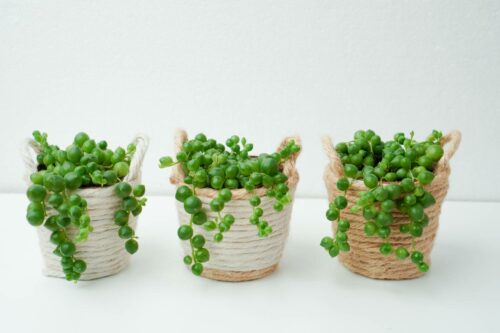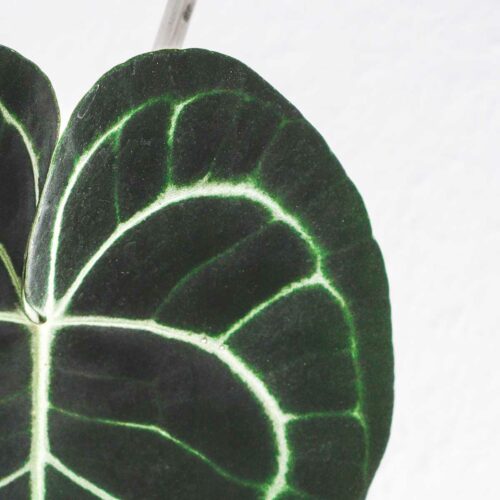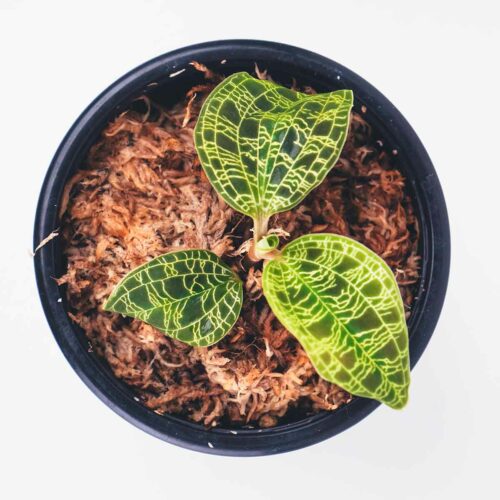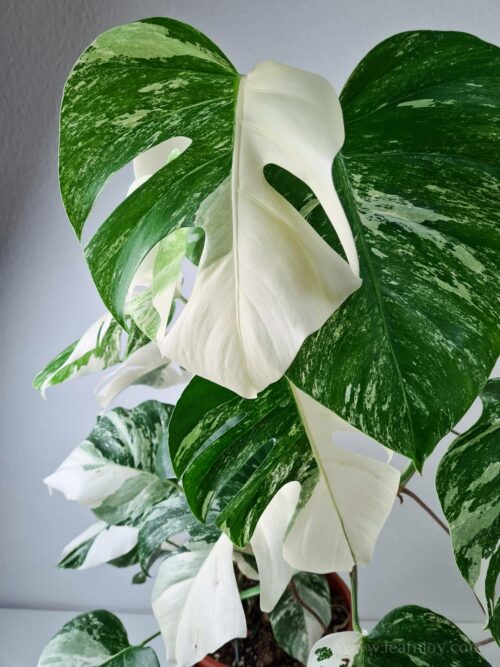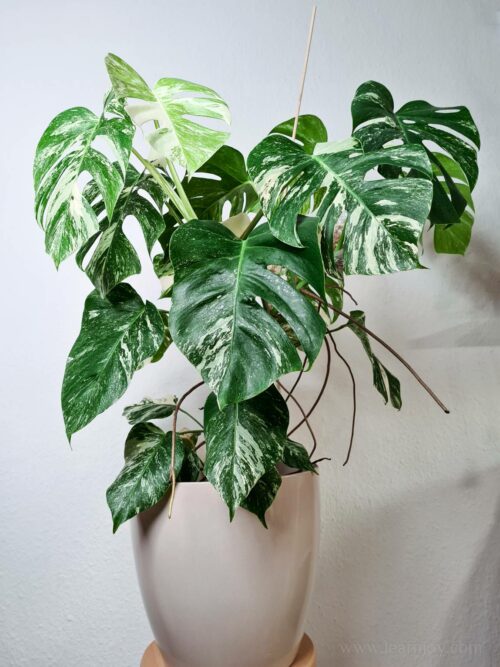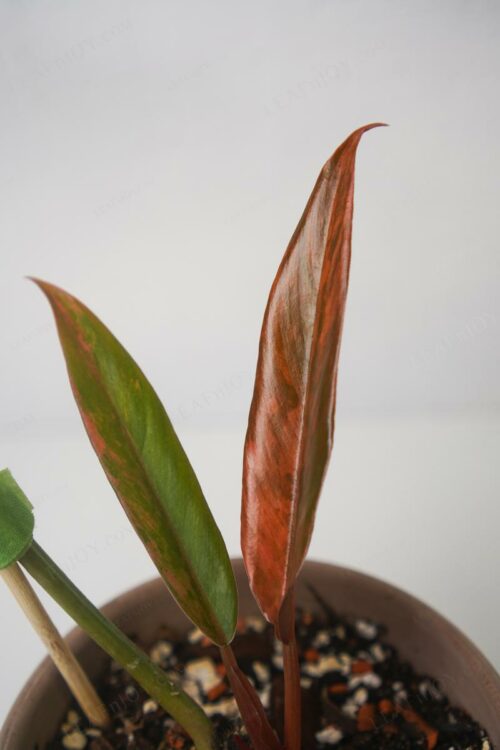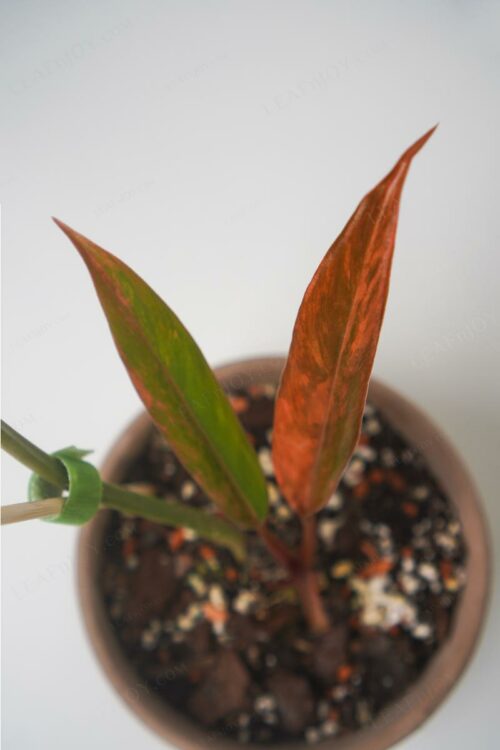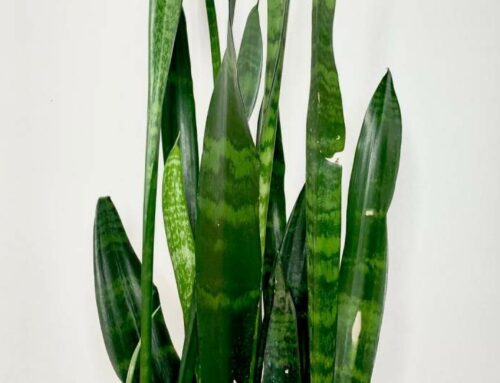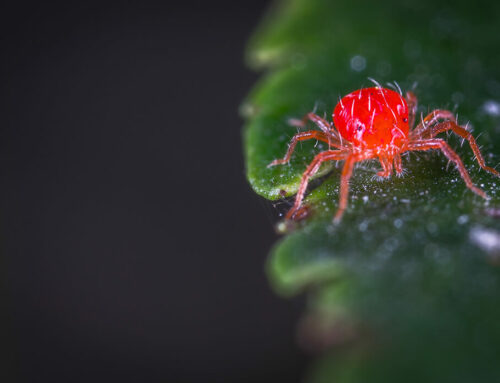White spots on tomato leaves can be caused by a variety of factors including fungal disease, pests, or other physiological plant problems. Tomatoes are one of the most popular vegetables (okay, okay, fruits) that can be grown from seed by just about anyone. There’s nothing like the taste of a sun-kissed tomato in a summer salad or a homemade lasagna sauce, yum, yum, and yum!
So if you suddenly notice white spots on the leaves of a tomato plant, it can be worrisome that your harvest might be threatened. There are 7 causes of white spots on tomato or tomatillo plants such as pests, fungi, water mold, sun scald, salt build-up, nutritional deficiency, or virus.
But rest assured, white spots on tomato plants are usually easily fixable, especially if the cause is diagnosed and action is taken immediately. In this article, you will learn about the different causes of white spots on tomato leaves, how to treat them and how to prevent them in the future.
Amazing lasagna, here we come!
This post may contain affiliate links. Read our Privacy Policy and Disclosure here.
White Spots on Tomato Leaves: 7 Causes & How to Fix Them
If you are wondering ‘what are the white spots on my tomato leaves’, what causes white spots on plant leaves and how to treat white spots on your tomato leaves, then you’ve come to the right place.
The table below is a quick summary of the different causes of white spots on tomato plants, their symptoms and how to treat them.
| Cause | Symptoms | How to Treat |
|---|---|---|
| Fungal Disease | powdery, white spots on leaves | remove affected leaves; use homemade or commercial fungicide |
| Late Blight | necrotic spots that might start off as white and then turn black | remove affected leaves; apply copper-based fungicide |
| Pests: Whiteflies | scattered spots especially on the underside of the leaves | spray with a garden-safe pesticide |
| Pests: Leafminer | white trails inside of the leaves | remove all infected leaves |
| Pests: Mealybugs | fluffy raised white patches on leaves | spray with a garden-safe pesticide |
| Sunscald | splotches that might be white and translucent | provide shade and shield the plant from strong winds |
| Salt Build-Up | white residue on leaves | opt for rainwater instead of tap water, reduce the strength of the fertilizer |
| Nutrient Deficiency | entire leaves turning white or yellow | apply fertilizer or correct the pH value of the soil |
| Virus | mottled and deformed leaves | dispose of all infected plants |
Continue reading for more in-depth information on what do white spots on your tomato leaves mean for the health of your plant and your harvest, and how you can fix and prevent possible plant disease and pest issues.
1. Fungal Diseases
Tomato plants are particularly susceptible to fungal diseases, especially when grown outdoors in a garden where they are not shielded from rain.
Let me say this again: Tomatoes H-A-T-E water on their leaves. With passion!
In fact, if your tomato plant is taking the hit of mother nature every time it rains, white spots will be the least of your concern. So seriously, if you have a tomato that is growing outside, step one is to not let rain fall on it.
Fungal diseases are caused by fungi. They can be a problem in the garden, especially when there is water on the leaves and not enough airflow around tomato plants. The most common fungal disease that causes white spots on tomato leaves is powdery mildew, which looks as if the leaves of the plant have been sprinkled with white powder. This fungus also spreads quickly through air and water droplets, so it’s important to control this disease as soon as possible otherwise it could spread throughout your entire garden!
How to treat powdery mildew on tomato plants?
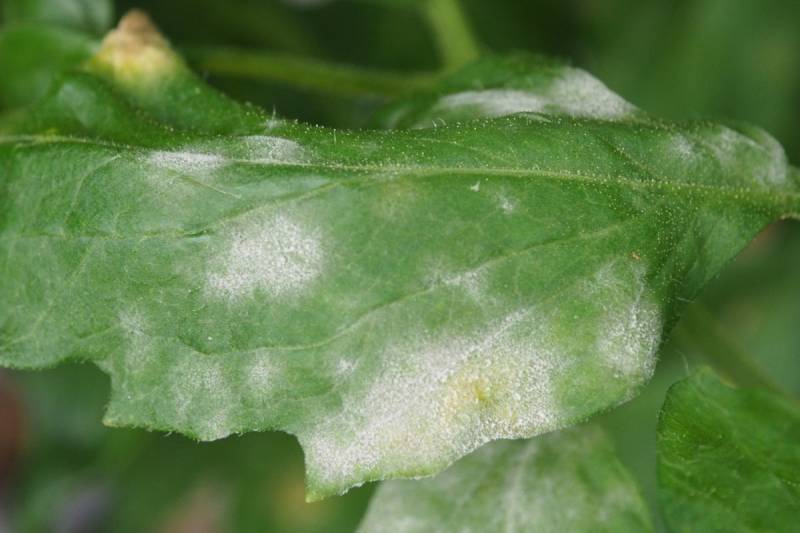
Using disinfected garden shears, remove all leaves that have been affected and dispose of them immediately.
Important: do not put leaves that have been infected with powdery mildew in your compost as this will just spread the disease to more plants
After you have removed all mildew-infected foliage, you can apply a general-purpose fungicide that contains potassium bicarbonate to keep any remaining spores on the plant from growing and spreading. Make sure to cover the entire plant and any neighboring plants that are nearby.
Alternatively, if you can’t find a potassium bicarbonate fungicide at your local store, here is an easy DIY fungicide recipe for powdery mildew:
- 4 teaspoons baking soda
- 1 teaspoon hand soap (NOT dishwasher soap!)
- 4 liters of room-temperature water (1 gallon)
Mix all ingredients together until the baking soda is completely dissolved. Spray the entire infected plant, ensuring that all leaves and stems are thoroughly covered until they drop. Spray neighboring plants as well to prevent powdery mildew from being spread around.
Note: The hand soap is optional, but it acts as an emulsifier and helps the solution stick to the leaves.
A couple of garden plants are particularly susceptible to powder milder such as zucchini, pumpkin, squash, lemon tree, and cucumber. So essentially, the same techniques to prevent and treat powdery mildew on tomatoes apply to these plants as well.
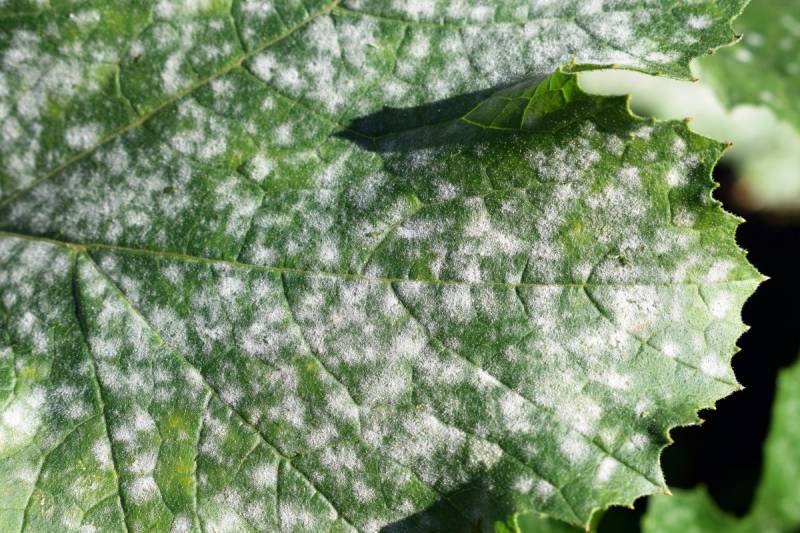
How to prevent fungal diseases on tomatoes?
- Always use a greenhouse for your tomatoes, where they will be protected from rain
- Allow adequate air flow around the plants
- by spacing them correctly, i.e. tomato plants should be planted about 18-24 inches apart
- Remove yellow or brown leaves promptly
- whenever you are watering your tomato plants, don’t get water on their leaves. As tomatoes require frequent irrigation, especially when they carry fruit, it might be worth considering a drip irrigation system for them
- opt for a fungi-resistant tomato variety, for example, the tomato varieties Geronimo, Massada, and Panzer are more resistant to powdery mildew compared to others
- water and fertilize your tomato plants regularly: strong plants can handle fungal diseases better than weaklings
- use copper fungicide preventively or another bio-fungicide throughout the growing season as frequently as mentioned on the label
- ensure that the plants are receiving adequate amount of light daily, i.e. tomatoes need at least 6-8 hours of direct sunlight
2. Late Blight
Late blight, a common disease on potato and tomato plants, is caused by Phytophthora infestans which is an oomycete (water mold). While late blight isn’t technically considered a fungal disease, it does share similarities with other types of Fungus such as Powdery Mildew (PM), Stem Rot (SR), etc., so I’ll address it here.
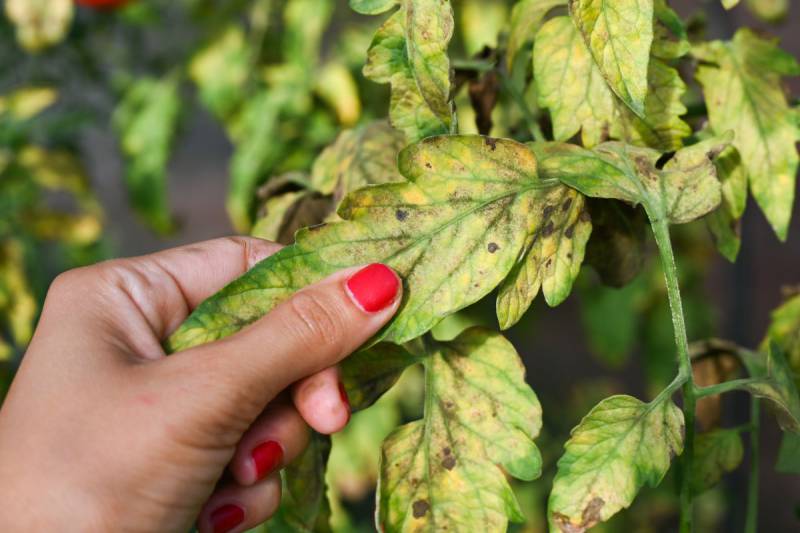
Late Blight Symptoms include thickened stems with darker blotches at the base along with rough edges or bumps along the top side of the leaf where the stem meets leaf margins; these areas may appear white-yellowish-brown before becoming brown or black.
How to treat late blight on tomato plants?
- Remove all affected leaves and dispose of them. Either burn them or throw them in the trash, but don’t put them in the compost pile!
- Apply a copper-base fungicide and ensure that the enter plant is covered thoroughly until water starts dripping. If you suspect that other plants might have come in contact with the infected plant, better be safe than sorry, and preventively spray them.
- Depending on the severity of the late blight, you might need to repeat the copper treatment.
How to prevent late blight on tomato plants?
- All of the above points mentioned on how to prevent fungal diseases on tomato plants apply to blight as well.
- Keep good soil moisture levels under your plants—you want them near saturation point without drowning them but not allowing excess water to flow out through their root system too much either because then they can become susceptible again later down the line when conditions change again due to drought conditions.
3. Pest Infestation
Whiteflies and leafminers are two common pests that can cause white spots on tomato leaves.
The whitefly larva punctures the leaf surface causing it to become discolored and brownish in appearance. The damage done by this particular insect will usually be visible from a distance, but not always obvious at close range because most plants have some degree of resistance or tolerance for them. If a plant is heavily infested with whiteflies, it may exhibit several symptoms.
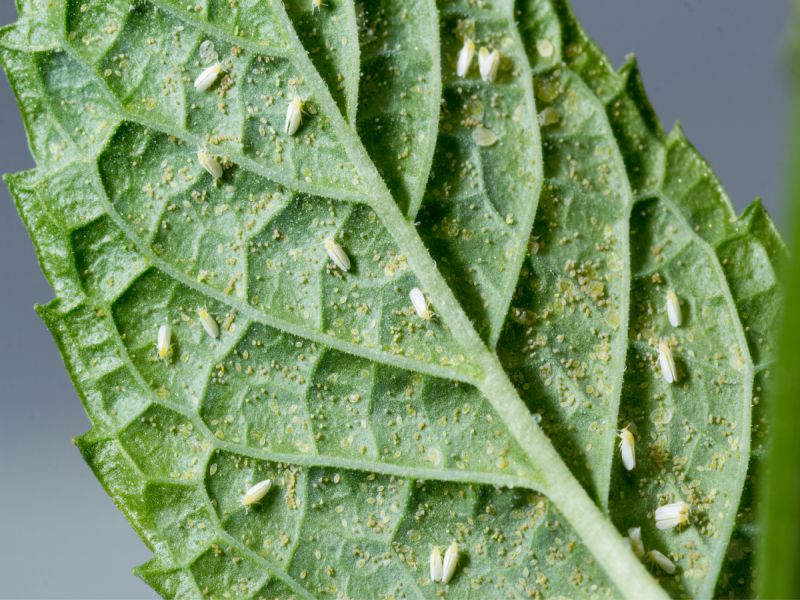
Leaves appear rolled up and deformed, especially near their tips. This is called “bleeding” of leaflets; it occurs when insects chew off parts of leaves as they feed on them!
Leafminers, on the other hand, insert their larvae inside of leaves. Once the larvae hatch, it starts eating its way out of the leaf leaving a white trace behind.
How to control and treat whiteflies on tomato plants?
To get rid of white flies on tomato plants, start by removing as many as possible by spraying down the plant with a jet of water. Follow the treatment with the use of bio-pesticide that is harmless to beneficial insects, for example, neem oil. When using the pesticide, make sure that the entire plant and especially the underside of the leaves are covered. Depending on the severity of the whiteflies infestation, you might need to repeat the treatments weekly. Since whiteflies are attracted to bright yellow colors, using yellow sticky cards can help with noticing a pest problem early on when it would be much easier to manage compared to a full-blown infestation.
How to control and get rid of leafminers on tomato plants?
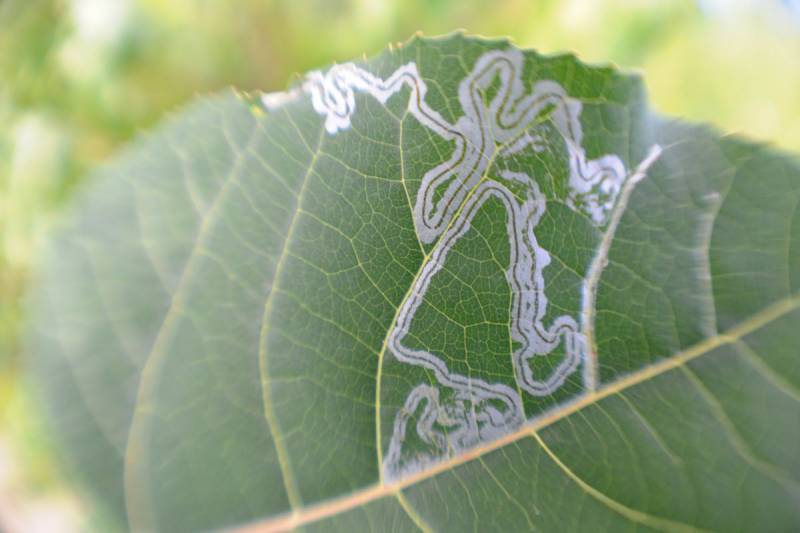
Unfortunately, pesticides or hosing down a plant will not remove leafminers. That’s why to get rid of leaf miners on your tomato plant (or on any plant really), just remove all infected leaves that have a visible sign of a leaf miner inside. Squish the leaf as well as possible to physically kill the larvae inside and dispose of the them immediately. Do not put the leaves in your compost pile, as leaf miner larvae might survive and infect other plants.
Mealybugs on tomato plants:
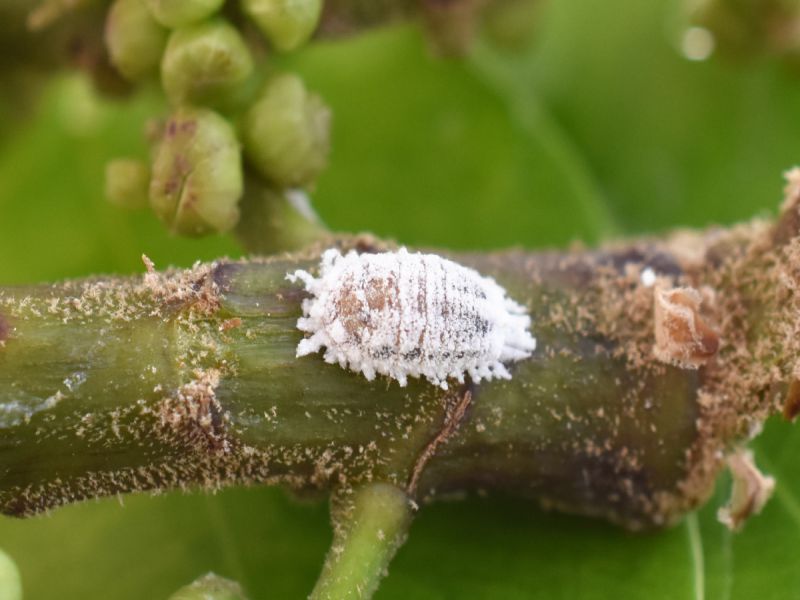
Mealybugs are usually not a common pest on tomato plants, but since they also can appear as white spots, I wanted to briefly mention them. Mealybugs are usually ornamental and houseplant pests (common to succulents) are resembling white fluffy balls on plants. Mealybugs can be eradicated the same way as white flies – remove as many as possible physically by hosing down the plant and following with a bio-pesticide (for example neem oil).
How to prevent pests on tomato plants?
If you are growing your tomato plants outdoors in a garden, pests usually cannot be avoided fully as they are part of the natural course of life. However, there are a couple of things that you can do to control pests on outdoor plants successfully.
The first line of defense against pests in a garden are beneficial predatory insects. To invite beneficial insects into your garden, opt for a different range of plants. planting diverse cultures in a garden promotes better biodiversity when it comes to beneficial insects. Keeping small and shallow water sources around a garden also makes sure that the little helpful friends will feel at home and will stay for longer. For example, ladybugs favor a lot of common plant pests and are able to keep them at bay. If you have trouble inviting ladybugs into your garden, their larvae can be purchased also online or at most garden centers.
Using yellow and blue cards around a garden can help you spot a pest problem right away. Make sure to place the sticky cards at the base of the ground and attach them to the top of the plants as well. Whenever a pest problem arises treat it timely and don’t delay.
To keep pests away from your garden, make sure that the plants are healthy and receiving adequate nutrients, water, and light. Sick plants are more inviting to pests as their natural defense mechanisms are down. On the other hand, healthy plants are able to withstand and bounce back from a pest infestation much better.
Always remove dead plant debris, leaves, and weeds. This is especially important in the fall as one of the main garden preparations for winter. Debris from old plants might have been infected by diseases and pests, that’s why to ensure healthy growth in the upcoming spring, it’s important to remove it to keep your garden clean and tidy. Never dispose of plant leaves and debris in your compost, however, if there was a health problem it might get spread.
4. Sun Scalding
If you notice light-colored splotches on your tomato plant leaves that have a transparent appearance, your plant might have gotten a little sunburn.
Sun scalding is environmental damage that happens to plants from being outside in direct sunlight and exposed to wind.
Yes, tomatoes L-O-V-E sun but while still young when they haven’t been hardened enough, i.e. in cases when seeds were sown inside and then the young seedlings were taken outside too soon, the plants are still vulnerable. In these cases, direct sunlight might burn the leaves. The result is white spots on the leaves, which can be unsightly, true, but thankfully aren’t dangerous to your tomato plants!
How to prevent sun scalding on tomato plants?
As mentioned, sun scalding is common and not a threat to tomato plants. You can acclimatize young plants to more sun by first placing them in a spot with shade in your garden or using shade cloth to protect them. Also, try to protect young tomato plants from drafts and strong winds outside.
5. Salt Build-Up
If you notice white spots on your tomato plants that you can easily wipe off and they don’t re-occur, then you could be dealing with a salt build-up. These salt build-ups occur especially when the water used for the plants is too hard, a fertilizer with a high salt content has been used or there is a disbalance in the pH of the soil.
If you notice white residue on the leaves of your tomato plants due to hard water, you shouldn’t worry all too much as these white spots generally aren’t harmful to the plants and should not impact your harvest negatively. On the other hand, if your tomato plant has white spots on its leaves and you notice that the edges of the leaves start turning brown and crispy, it could be an indication that your plant is being overfertilized or the pH of the soil is improper. In this case, hold off on the fertilization for a couple of days and observe how the plant feels. Worm castings work wonders to correct the pH value of the soil and restore the natural microbial balance.
How to prevent salt build-ups on plants?
To prevent white spots caused by salt residue on the leaves of tomato plants (or any garden or indoor plants) use rainwater whenever possible.
P.S. If you have recently sprayed your tomato plant with a pesticide or a fungicide, the white spots on the leaves might be just residue from the treatment.
6. Nutrients Deficiency
Usually, since tomato plants are vigorous growers, they deplete the fastest their nitrogen depot, which results in pale leaves and stunned growth.
However, when it comes to white spots on the leaves of tomato plants, there is another micro element that might be to blame.
Magnesium deficiency is common with tomato plants, especially with those that are carrying a lot of fruit. A tomato plant with severe magnesium deficiency is shown on the photo below.
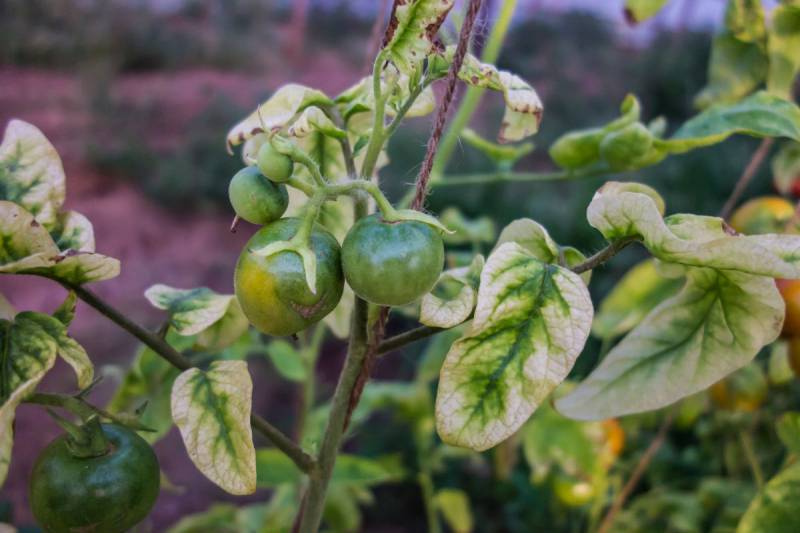
Magnesium deficiency appears as lightly colored patches between the veins on tomato leaves, while the veins remain green as seen on the photo below. Usually, magnesium deficiency in tomato plants starts showing on a couple of leaves at first, however, if the issue is not corrected, more and more leaves will soon show signs of suffering.
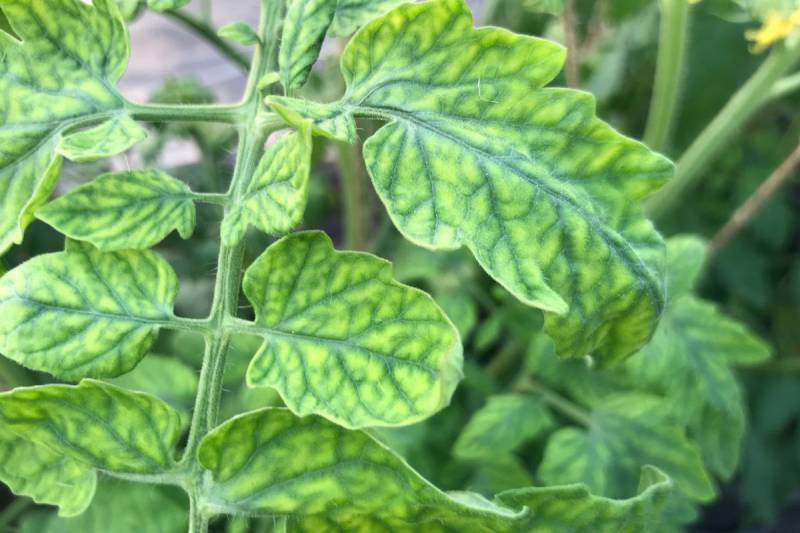
To correct a magnesium deficiency in a tomato plant, make sure that you regularly feed your plant with a balanced fertilizer that contains magnesium and other micronutrients. If you are sure that your fertilizer has magnesium but your tomato plant still shows signs of deficiency, then the pH of the soil might be improper and the nutrients might be getting locked and are inaccessible to the plant. In these cases, the pH value would need to be corrected. Worm castings, for example, help keep the pH of soil for most plants in a desirable range.
7. Tomato Mosaic Virus
Tomato mosaic virus is a common disease, especially for outside-grown plants. It can be transmitted by aphids and typically causes mottled and deformed leaves, and stunted growth. The mottling pattern can vary and be in different colors from light green, mint, and white.
Unfortunately, there is no treatment for the tomato mosaic virus and since the disease can spread quite fast to other plants as well, it is advisable to remove all infected plants and destroy them. Do not, under any circumstance, place diseased plants in the compost pile as this will just spread the virus all around.
Monitor the rest of your garden for signs of a viral disease and dispose of any infected plants as soon as the problem has been noticed.
How to prevent mosaic virus on tomato plants?
It is usually very hard to prevent the tomato mosaic virus, especially when the plants are growing outside in an unprotected garden. As mentioned, the tomato mosaic virus is easily transmitted through pests and infected tools. That’s why, apart from inspecting thoroughly any new plants that you introduce in your garden, always monitor your plants for pests and try to control a pest infestation from the beginning.
To avoid spreading the virus from an infected to a healthy plant, make sure to always disinfect your garden shears, other cutting tools and old pots, if you are reusing them. To limit the chances of the virus spread, it is also advisable to use sterile soil whenever needed.
White Spots on Tomato Leaves: Frequently Asked Questions
Can I eat tomatoes with white spots?
I.e. is it safe to eat tomatoes with white spots? In most cases, it is alright to eat tomatoes with white spots. Just cut away the discolored part from the tomato and enjoy!
How to treat white spots on tomato leaves?
To fix white spots on tomato leaves, first identify the cause and then proceed with the respective treatment suggested in our article.
White Spots on Tomato Plant Leaves: Final Thoughts
Sometimes, even after providing your tomato plants with the best possible care and nutrients, white spots might appear out of the blue. I know, it’s not a fun thing to discover in your garden!
In this article, 7 different causes of white spots on tomato garden plants were discussed as well as, different method on how to treat white spots on tomato leaves.
The good news is, however, that once you identify what causes the white spots on the leaves of your tomato plants, you can quickly jump into action and fix the problem.
Best of luck with your tomato plants, happy growing and enjoy a delicious harvest! :)


